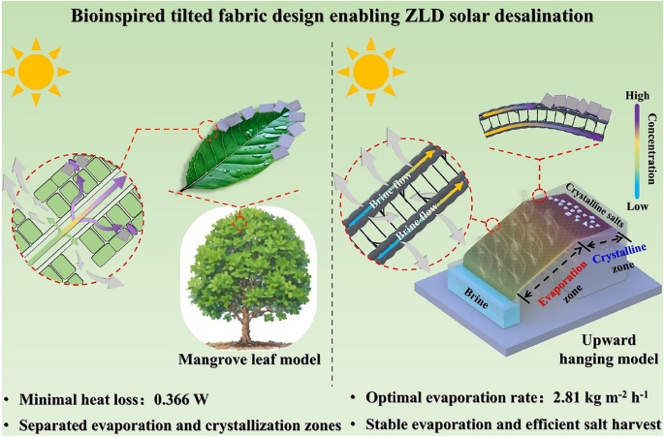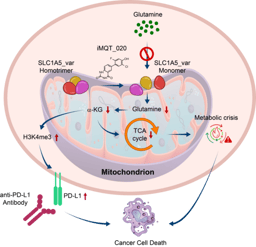Nature‑Inspired Upward Hanging Evaporator with Photothermal 3D Spacer Fabric for Zero‑Liquid‑Discharge Desalination
Published in Bioengineering & Biotechnology, Earth & Environment, and Ecology & Evolution

As global freshwater demand intensifies, conventional desalination faces mounting challenges from brine disposal and energy consumption. Now, researchers from Donghua University, led by Prof. Haoxuan Li and Prof. Meifang Zhu, have developed a mangrove leaf-inspired upward-hanging evaporator using 3D photothermal spacer fabric (PPSF). This novel design achieves zero-liquid-discharge (ZLD) desalination while maintaining high evaporation rates and enabling simultaneous salt recovery.
Why This Matters
- Zero Liquid Discharge: Eliminates brine discharge by spatially separating evaporation and crystallization zones.
- High Efficiency: Achieves 2.81 kg m-2 h-1 evaporation rate with only 0.366 W heat loss under 1-sun illumination.
- Scalable & Sustainable: Uses low-cost, knit photothermal fabric suitable for large-scale deployment.
Innovative Design
- Bioinspired Structure: Mimics mangrove transpiration—water rises via capillary action, while salt crystallizes at the lower end.
- Photothermal Fabric: In situ polymerized polydopamine and polypyrrole on 3D spacer fabric deliver 97.8% solar absorption.
- Tilt Optimization: A 52° tilt angle minimizes heat loss and maximizes evaporation by suppressing brine flow.
Performance Highlights
- Stable Operation: Maintains 2.71 kg m-2 h-1 over 72 hours with efficient salt collection (7.28 g over 3 days).
- Durability: Retains 93% solar absorption and mechanical integrity after 14 days of use.
- Real-World Validation: Demonstrates 2.8 kg m-2h-1 evaporation under natural sunlight with effective pollutant and salt removal.
This work presents a paradigm shift in solar desalination—integrating biomimetic design, thermal management, and ZLD strategy—for sustainable freshwater and salt co-production.
Follow the Topic
-
Nano-Micro Letters

Nano-Micro Letters is a peer-reviewed, international, interdisciplinary and open-access journal that focus on science, experiments, engineering, technologies and applications of nano- or microscale structure and system in physics, chemistry, biology, material science, and pharmacy.


Please sign in or register for FREE
If you are a registered user on Research Communities by Springer Nature, please sign in